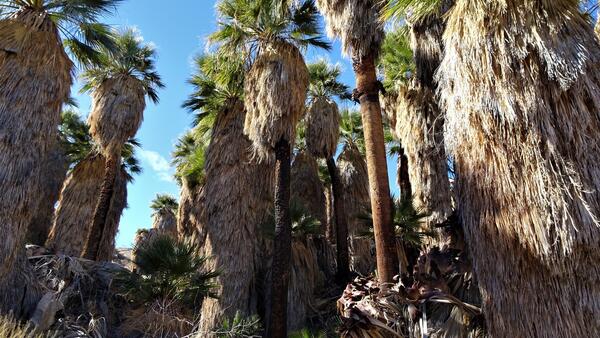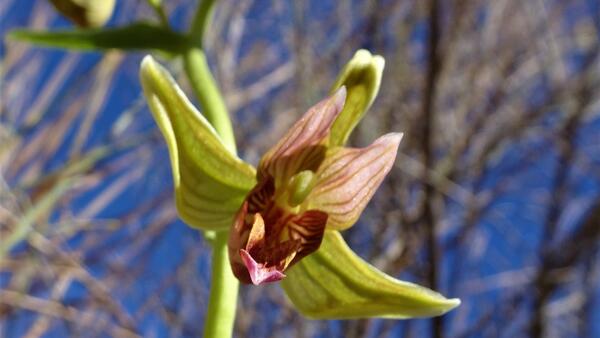Water: The Driving Force of Nature
“If there is magic on this planet, it is contained in water.” — Loren Eiseley
“Water is the driving force of all nature.” — Leonardo da Vinci
As far as we know, water is essential for life throughout the universe. Scientists searching for life beyond Earth and beyond our solar system search for planets that are in the “Goldilocks zone,” not too close or too far from their sun so that water could exist in a liquid state. Too close to a sun and you get conditions akin to those found on Mercury or Venus. Too far from a sun and if water exists it will be permanently frozen. Earth is in the perfect orbit for life to exist. In fact, as the primordial Earth cooled from its initial molten orb, almost as soon as it cooled sufficiently for there to be solid rocks and liquid water, life in its earliest, simplest forms existed here.
Nowhere on Earth is the influence of water on life so abundantly clear as it is in deserts. Deserts are by definition in a perpetual water deficit compared to non-desert biomes. Yet life in deserts, in terms of species diversity, exceeds almost any other of Earth’s biomes except the tropics. In a study published in 2022 in the journal Nature Climate Change, (Williams et al., vol. 12, pg. 232-234) the authors discovered that during 2000–2018 southwestern North America exceeded drought duration and intensities not recorded (using tree ring diameters) since the mega-drought in the late-1500s, when the Anasazi cliff-dwelling culture collapsed. Unlike the late 1500s drought, the severity of our current drought has our human fingerprints, via modern climate change, all over it. The severe drought conditions are continuing; 2022 was the driest rain year (July through June) ever recorded (since the 1920s) in the eastern Coachella Valley. Just 0.68 inches fell this year at the Indio weather monitoring station, where the average is a bit over 3 inches. How can life exist here in such abundance? And if severe droughts continue to be the dominant climate, what does that mean for our deserts’ biological richness?
The diversity of life in deserts exists at least in part due to the gradients of water availability across the desert landscape. Different life forms adapt to different zones within that water gradient. The average rainfall in the western Coachella Valley is five and a half inches, almost twice that of the eastern valley. Further west, at the desert border near Snow Creek, average rainfall is over 10 inches, well over three times that falling in Indio, and twice that compared to Palm Springs. These moisture gradients are not just defined by rainfall, temperature (meaning evaporation rates) plays a huge role as well. Moving upslope to cooler temperatures and moving between hotter south facing slopes and cooler north facing slopes has an enormous impact on how much moisture is available for animals and plants. These gradients are especially evident during events such as severe drought. In the Coachella Valley this year (2022), the plants occurring on flats and lower slopes in the eastern valley were parched and crispy, with almost no successful annuals blooming. However, in steep canyons and at elevations above 600 meters (2000 feet) some healthy annual plants could be found. In the mid-valley, the lower slopes were still crispy, but above 400 meters (1300 feet) healthy annuals could be found. In the wetter western valley annuals could be found in canyons and almost down to the valley floor. Then at the higher elevations, above 5,000 feet, wildflowers were plentiful and, in some areas, spectacular. Even during a severe and extended drought there were regions of plenty.
Another factor influencing moisture availability is geology, especially earthquake faults that create barriers to subsurface movements of water. The faults act like underground dams that can bring deep water, water that may have fallen from the sky thousands of years ago when ground sloths and mastodons roamed this terrain, to, or close to, the surface. This spatial diversity of water availability equates to biological diversity because those differences in moisture are exploited by different animals and plants in different ways.
These differences in where and how much water is available allow luxuriant stream orchids, (Epipactis gigantea) to thrive in and around desert palm oases in the driest and hottest corners of the Coachella Valley, among the driest-hottest corners in all of North America.
At the other, cooler-wetter end of the Coachella Valley you can still find the hyper moisture sensitive Coachella Valley Jerusalem cricket, a species found nowhere else on Earth. Even at the cooler-wetter end of the moisture gradient, only a scant few minutes on the surface during the day is certain death for this cricket. To live here, the cricket only comes to the surface at night when the humidity is highest, and only for a couple winter months. Otherwise, they spend their lives far underground.
Even during those exceedingly rare instances when rainwater might pool on the desert surface after a brief storm event, many desert animals never drink a drop. Heteromyid rodents, pocket mice and kangaroo rats, dominate the rodent niche across the North American deserts, with as many as 11 species occupying different parts of the California deserts and six found in the Coachella Valley. These rodents never drink, and never venture out in the daytime unless disturbed by a potential predator. Otherwise, they live in underground burrows during the day where the humidity approaches 100%, gaining most of their critical-for-life water through the seeds they eat. One of the metabolic products of digesting high carbohydrate-laden seeds is water. Kangaroo rats are also known to manage their seeds stored in their burrows, moving them to higher humidity portions of their burrows prior to eating them so that the seeds will have absorbed as much water as possible.
Desert lizards also never drink, yet unlike the pocket mice, kangaroo rats, and Jerusalem crickets, most of them are active during the daytime, although they typically avoid the hottest parts of the day. They can accomplish this seemingly miraculous behavior because of their impervious-to-water-loss scaly skin. They have no sweat glands and so the only avenue for water loss is through their mouths and nose. Vegetarian lizards such as chuckwallas and desert iguanas gain water through the plants they eat, but that puts them at risk during severe droughts when there are few if any plants to eat. They are among our largest lizards; during years with plentiful plants, they will put on large fat stores, enough so that they can survive through inactivity and metabolizing fat into water for one or two dry years or more. Other desert lizards are mostly insect eaters, insectivores. Insects gain their water from eating seeds and other plant parts, and the lizards gain their water from eating insects. Insects are extremely efficient at finding food in deserts. Deserts are too dry to support the bacteria and fungi that decompose dead plant material in wetter biomes, so insects have evolved to fill that niche in deserts. The richness of insects then becomes fodder for lizards. Still, the droughts, in terms of duration and severity are unprecedented. We are seeing incremental shifting of many lizards’ populations to higher elevations and cooler canyons, at least temporary climate refugia.
However, insectivorous sand dune lizard populations, the fringe-toed lizards and flat-tailed horned lizards, have nowhere to go. The sand dunes are restricted to the valley floor. During previous droughts their populations declined, but then bounced back during wetter periods. So far, the larger sand dune areas with larger lizard populations appear to be surviving, albeit at lower densities, a testimony to their adaptability as well as the adaptability of their insect prey. Populations on smaller sand dune patches seem to be suffering more.
Nullius in verba
Go outside, tip your hat to a chuckwalla (and a cactus), think like a mountain, and be safe

